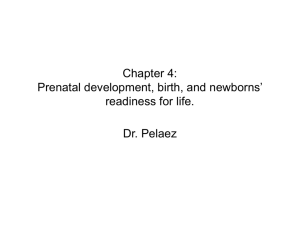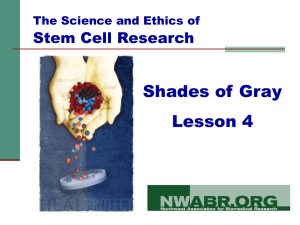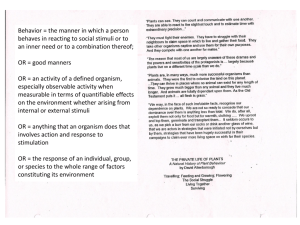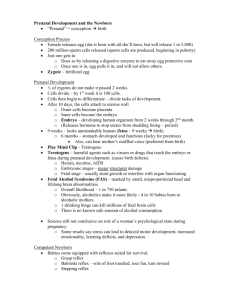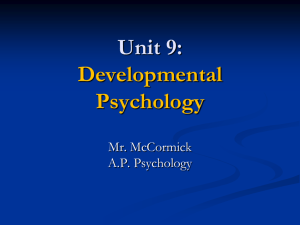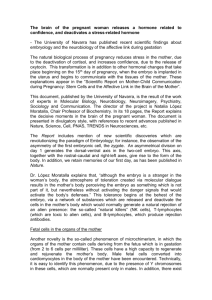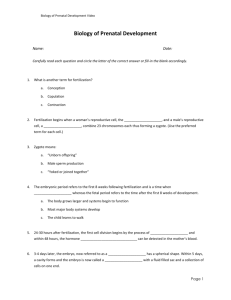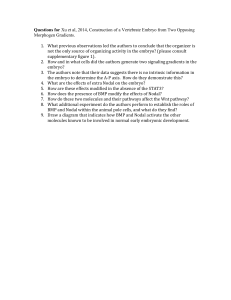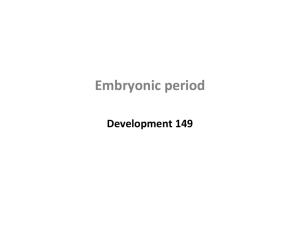PRENATAL DEVELOPMENT GERMINAL PERIOD EMBRYONIC
advertisement
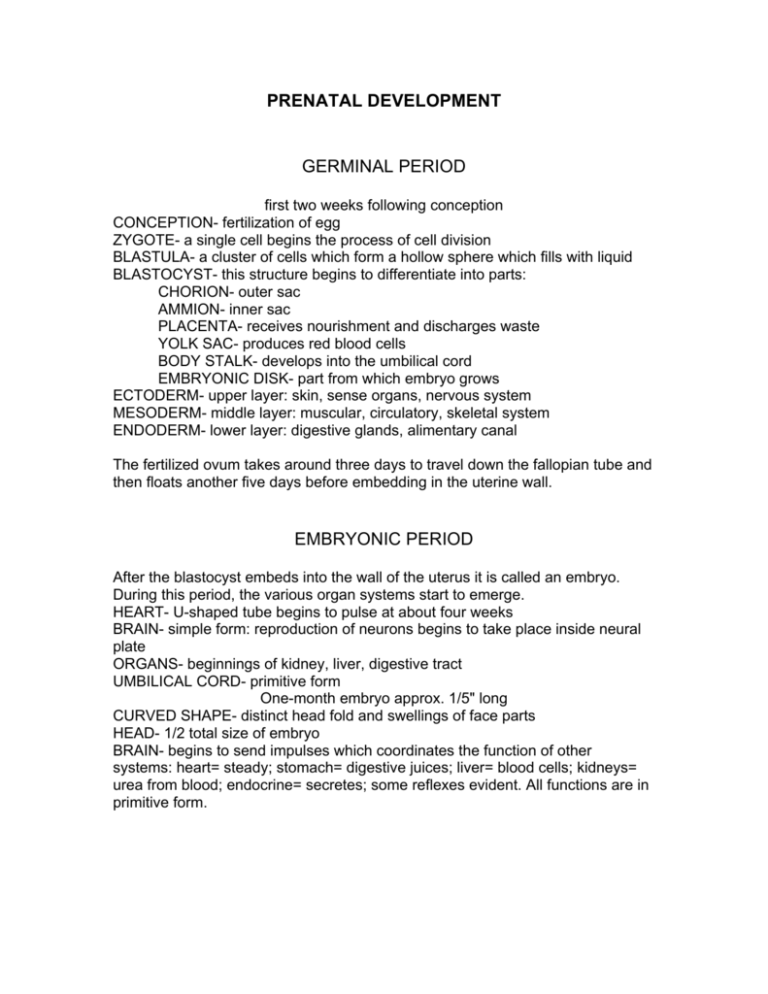
PRENATAL DEVELOPMENT GERMINAL PERIOD first two weeks following conception CONCEPTION- fertilization of egg ZYGOTE- a single cell begins the process of cell division BLASTULA- a cluster of cells which form a hollow sphere which fills with liquid BLASTOCYST- this structure begins to differentiate into parts: CHORION- outer sac AMMION- inner sac PLACENTA- receives nourishment and discharges waste YOLK SAC- produces red blood cells BODY STALK- develops into the umbilical cord EMBRYONIC DISK- part from which embryo grows ECTODERM- upper layer: skin, sense organs, nervous system MESODERM- middle layer: muscular, circulatory, skeletal system ENDODERM- lower layer: digestive glands, alimentary canal The fertilized ovum takes around three days to travel down the fallopian tube and then floats another five days before embedding in the uterine wall. EMBRYONIC PERIOD After the blastocyst embeds into the wall of the uterus it is called an embryo. During this period, the various organ systems start to emerge. HEART- U-shaped tube begins to pulse at about four weeks BRAIN- simple form: reproduction of neurons begins to take place inside neural plate ORGANS- beginnings of kidney, liver, digestive tract UMBILICAL CORD- primitive form One-month embryo approx. 1/5" long CURVED SHAPE- distinct head fold and swellings of face parts HEAD- 1/2 total size of embryo BRAIN- begins to send impulses which coordinates the function of other systems: heart= steady; stomach= digestive juices; liver= blood cells; kidneys= urea from blood; endocrine= secretes; some reflexes evident. All functions are in primitive form. FETAL PERIOD Beginning of this period is marked by appearance of bone cells about three months after conception. This is the major portion of the prenatal development. THIRD MONTH: measures ~ 3" long; forehead and nose prominent; ears level w/ lower jaw; closed eyelids; buds of 20 teeth; ribs & vertebrae turn to hard cartilage; nails begin to grow; genitals more prominent; weighs ~ 1 oz. and very active; begins to move body parts. FOURTH MONTH: the lower part of the body grows more rapidly in proportion with the head, which is now about 1/4 of the total body size. Weight ~ 4 oz.; measures 6-7" long; muscular maturation continues; movements and reflexes are more rapid; increase in size and weight of the body. FIFTH MONTH: ~ 12" long; weight ~ 1 lb.; structure of skin in its final form; develops sebaceous glands; bony axis straightens; favorite positions & increased activity. SIXTH MONTH: increase in size by ~2" and 1 lb.; opens eyes- completely formed and moving; many taste buds on tongue; eyebrows and lashes; lanugo hair appears; grasp reflex; hiccups; irregular breathing. SEVENTH MONTH: capable of independent life; cerebral hemispheres almost complete; variety of behavioral responses; testicles descend; stores iron from mother; able to survive outside, but susceptible to infections. EIGHTH TO NINTH MONTH: final development; obtains immunities from mother; fat cells help round out body; increase in size about 1/2 lb. per week; birth weight average ~ 7 lbs. & varies from 5-12 lbs.; normal term pregnancy is 280 days. BIRTH is the last stage of prenatal development. When the head moves into position, the cervix begins to thin out. THREE STAGES OF LABOR FIRST: dilation of cervix; water breaks SECOND: baby progresses through birth canal; crowning and delivery; nose suctioned; cut umbilical cord; establish apgar score= reflexes, color, etc.; CROWNING: infant's head at the vulva EPISIOTOMY: surgical cutting of the area between the anal and vaginal openings to prevent tissue tears. THIRD: expulsion of the placenta AFTERBIRTH: placenta and fetal membranes

